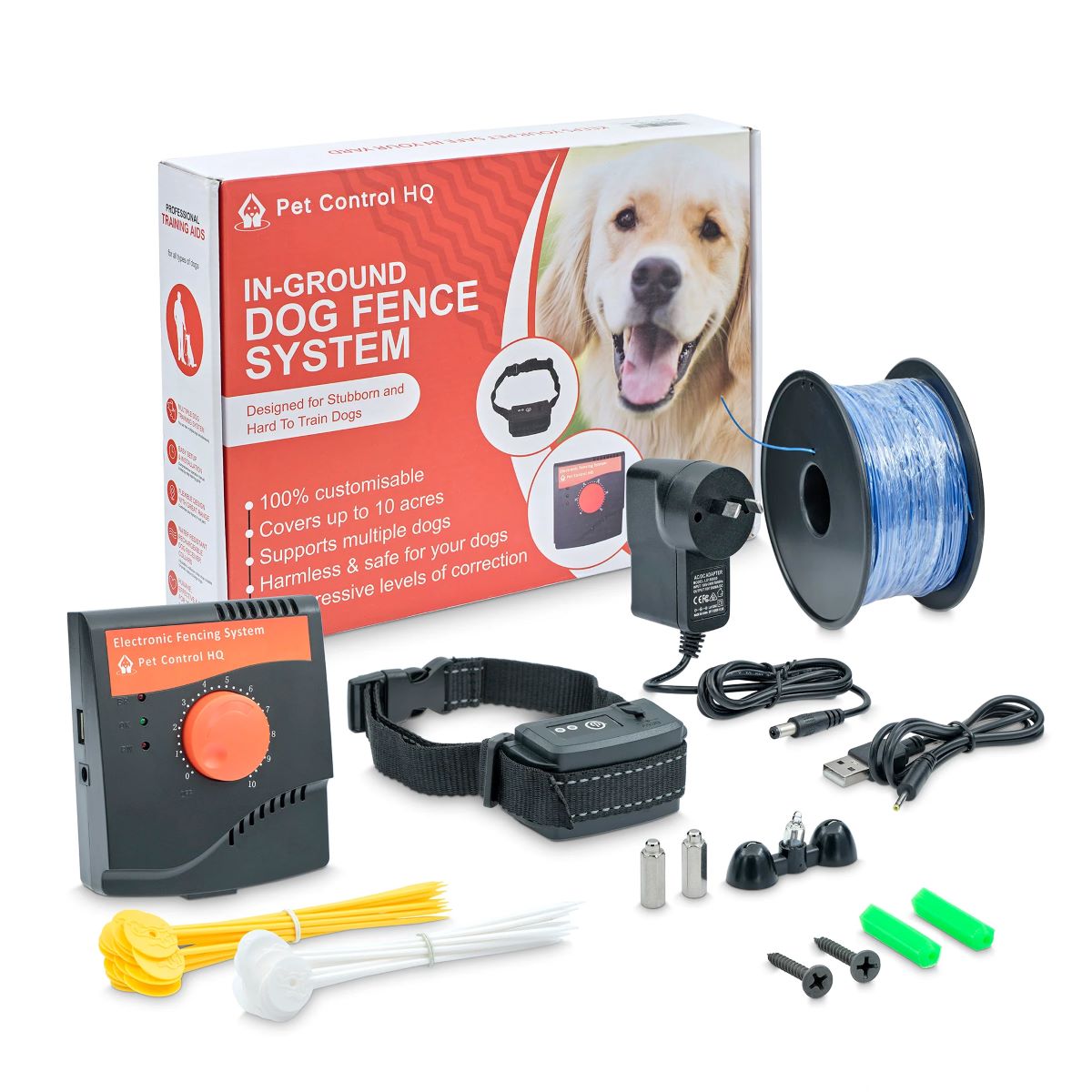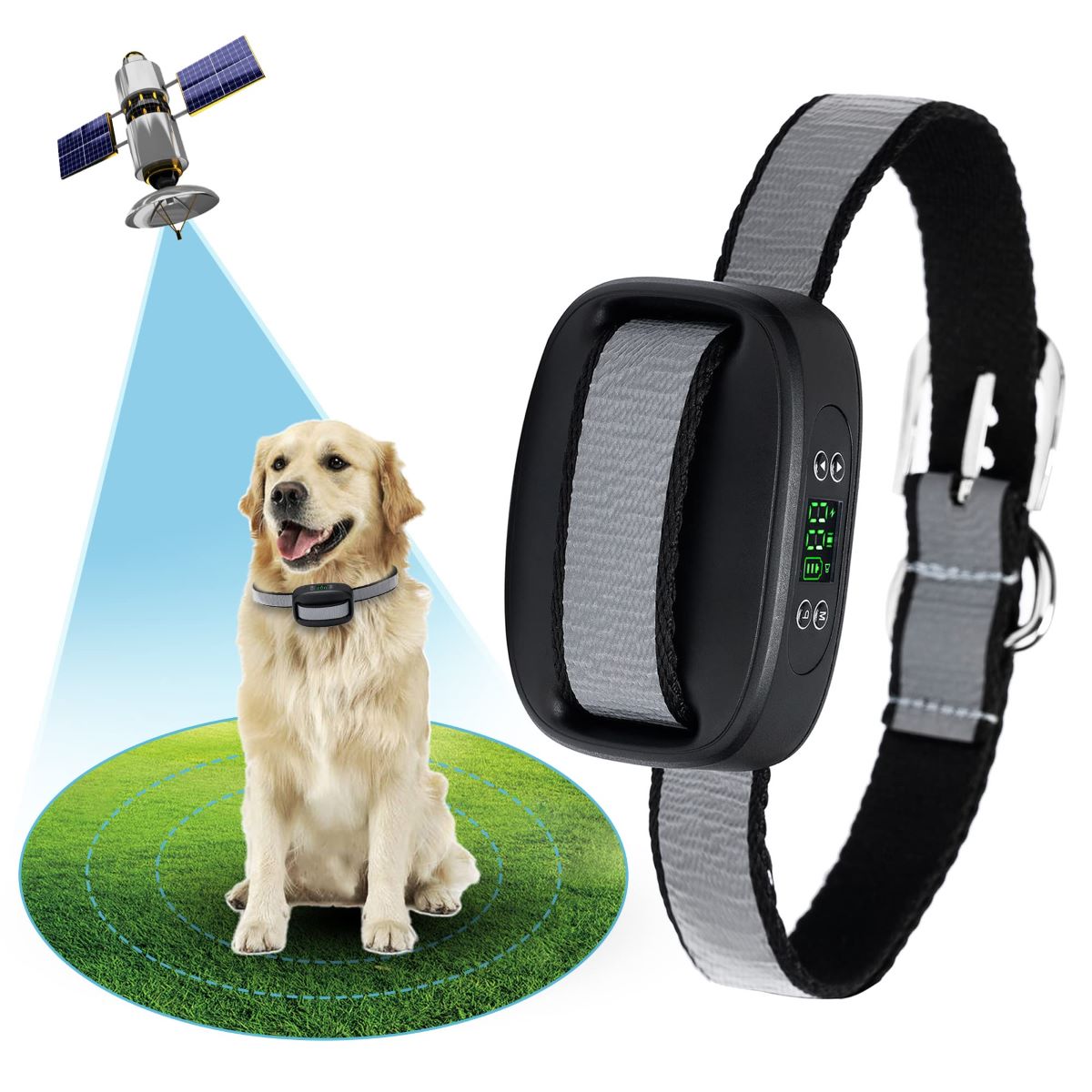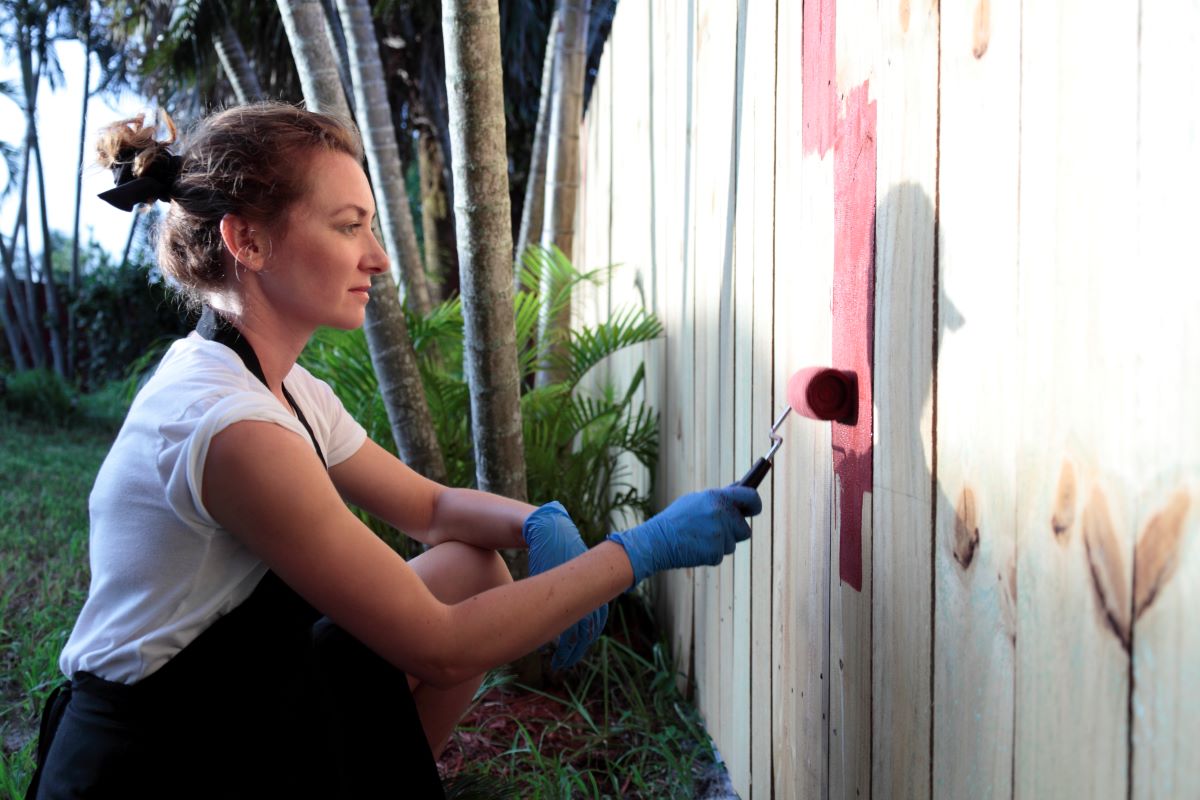

Articles
How Much Is An Electric Dog Fence
Modified: August 24, 2024
Discover articles on how much an electric dog fence costs, installation tips, and benefits. Stay informed with expert advice on keeping your dog safe and secure.
(Many of the links in this article redirect to a specific reviewed product. Your purchase of these products through affiliate links helps to generate commission for Storables.com, at no extra cost. Learn more)
Introduction
Welcome to our comprehensive guide on electric dog fences. If you’re a dog owner concerned about keeping your furry friend safe and secure within your property, you’ve come to the right place. An electric dog fence can provide a convenient and effective solution to contain your dog without the need for traditional physical barriers like walls or fences.
In this article, we’ll explore how electric dog fences work, discuss the pros and cons of using them, delve into the factors that influence their cost, and provide an estimate of the average installation expenses. Whether you’re looking to install an electric dog fence yourself or hire a professional, we’ll also help you understand the cost differences between the two options.
Before we dive into the details, it’s important to note that the well-being and safety of your dog should always be your top priority. Electric dog fences should never replace responsible supervision and training. They should be used as a supplemental tool to ensure your dog’s confinement and prevent them from wandering off or entering restricted areas.
Now, let’s start by understanding how electric dog fences work and the different types available in the market.
Key Takeaways:
- Electric dog fences offer a cost-effective, customizable, and unobtrusive solution for containing your furry friend, but require careful consideration of installation costs, training, and potential additional expenses.
- When deciding between DIY and professional installation, weigh the cost savings against the time, effort, and potential errors involved. Consider additional costs such as training, maintenance, and permits to ensure a smooth and successful electric dog fence installation.
Read more: How To Train A Dog On An Electric Fence
How Electric Dog Fences Work
Electric dog fences, also known as invisible fences, utilize a combination of boundary wires and a receiver collar to create a virtual boundary for your dog. Here’s how they work:
- Boundary Wires: A series of underground boundary wires are installed around the perimeter of your property. These wires define the boundary within which your dog can safely roam. The wires are connected to a transmitter, which emits a radio signal.
- Receiver Collar: Your dog wears a receiver collar that is designed to pick up the radio signal emitted by the transmitter. The collar is equipped with contact points that touch your dog’s neck. When your dog approaches the boundary, the collar emits a warning tone or a mild static correction to deter them from crossing the boundary.
- Training: Proper training is essential for the effective use of electric dog fences. During the training process, your dog learns to associate the warning tone or static correction with the boundary. This helps them understand their limits and prevents them from crossing the boundary even when the collar is not present.
It’s important to note that electric dog fences work best for dogs that have already undergone basic obedience training. If your dog has a history of aggression or is prone to escaping, an electric dog fence may not be the most suitable option for their containment.
There are two primary types of electric dog fences available:
- Wired Electric Dog Fences: These fences require the installation of physical boundary wires around your property. This type provides a customizable boundary, allowing you to define exactly where you want your dog to stay. Wired electric dog fences are suitable for both large and small properties.
- Wireless Electric Dog Fences: These fences do not rely on physical wires; instead, they use a central transmitter to create a circular boundary. Wireless electric dog fences are typically easier to install than wired ones, but they may have limitations in terms of range and coverage. They are most suitable for smaller properties or areas where burying wires is not feasible.
Now that you have a basic understanding of how electric dog fences work, let’s explore the advantages and disadvantages of using them.
Pros and Cons of Electric Dog Fences
Electric dog fences offer several benefits, but it’s important to weigh them against the potential drawbacks. Let’s take a look at the pros and cons:
Pros:
- Cost-effective: Electric dog fences are generally more affordable compared to traditional fencing options. If you have a large property, the cost of installing a physical fence can be significantly higher.
- Unobstructed Views: One of the main advantages of electric dog fences is their aesthetic appeal. Since there are no physical barriers, you can enjoy an unobstructed view of your surroundings.
- Flexibility: Electric dog fences can be easily customized to fit the layout of your property. You can define specific boundaries and keep your dog away from areas like gardens, pools, or driveways.
- Easy Installation: Wireless electric dog fences, in particular, are simple to set up. You don’t need to bury wires, making them ideal for rental properties or temporary use.
- Effectiveness: With proper training, electric dog fences can effectively contain your dog within the boundaries. They act as a visual and audible reminder for your dog to stay within the safe zone.
Cons:
- Training Required: Electric dog fences require training to ensure your dog understands the boundaries. This may take time and effort on your part to effectively communicate and reinforce the limitations to your dog.
- Potential Fear or Stress: Some dogs may develop fear or anxiety due to the static corrections or warning tones produced by the receiver collar. It’s important to monitor your dog’s reaction and make adjustments accordingly.
- Not Suitable for All Dogs: Certain breeds, particularly those with a high pain tolerance, may be less responsive to the static corrections. Additionally, dogs with behavioral issues or a tendency to be aggressive may not be suitable for electric dog fences.
- No Protection from Outside Threats: Electric dog fences only serve the purpose of containment within your property. They do not provide protection from other animals or individuals who may enter your property.
- Power Outages: In the event of a power outage, electric dog fences may lose functionality. Backup power options, like batteries, can be considered to prevent any potential escape.
Understanding the pros and cons of electric dog fences is crucial in determining whether they are the right choice for you and your pet. Now, let’s move on to discussing the factors that influence the cost of an electric dog fence installation.
Read more: How To Dog Proof A Fence
Factors Influencing the Cost of an Electric Dog Fence
The cost of installing an electric dog fence can vary depending on several factors. It’s important to consider these factors when budgeting for your project. Here are some key factors that influence the cost:
1. Property Size:
The size of your property plays a significant role in determining the cost of an electric dog fence installation. The more wire needed to create the boundary, the higher the cost. Larger properties require a greater amount of wire and may also necessitate additional equipment, such as extra transmitters or receivers, to ensure proper coverage.
2. Type of Electric Dog Fence:
There are two main types of electric dog fences: wired and wireless. Wired electric dog fences typically involve burying wires around your property, which can be a more time-consuming task. This may result in higher installation costs compared to wireless electric dog fences, which require minimal setup.
3. Equipment Quality:
The quality of the equipment used for the electric dog fence will affect the overall cost. Higher-quality systems often come with advanced features, such as adjustable correction levels, multiple boundary settings, and better durability. While these systems may have a higher upfront cost, they can provide better long-term performance and reliability.
Read more: How Much Does Electric Fence Cost
4. Additional Features:
Some electric dog fence systems offer additional features that can enhance convenience and functionality. These features can include remote control capabilities, rechargeable collars, compatibility with smartphone apps for monitoring, and more. Including these features can increase the overall cost of the system.
5. Professional Installation:
Deciding whether to hire a professional for the installation or do it yourself can impact the cost. Professional installation ensures proper placement of wires and equipment, saving you time and potential mistakes. However, it comes at an additional cost. DIY installation can save you money but requires careful planning and execution to ensure the system functions correctly.
6. Accessories and Add-Ons:
There are various accessories and add-ons available for electric dog fences, such as surge protectors, extra receiver collars for multiple pets, and wire break alarms. These additional components can increase the overall cost but may provide added convenience and functionality.
Considering these factors when planning for an electric dog fence installation will help you estimate and budget your expenses more effectively. Next, let’s explore the average cost of installing an electric dog fence.
Average Cost of an Electric Dog Fence Installation
The cost of installing an electric dog fence can vary based on factors such as property size, type of system, and whether you choose professional installation or opt for a DIY approach. While exact costs will vary, here is a general breakdown of the average expenses you can expect:
Read more: How To Train A Dog On An Invisible Fence
Wired Electric Dog Fence:
For a wired electric dog fence, the average cost typically ranges from $1 to $3 per linear foot. This includes the cost of the boundary wires, transmitter, receiver collar, and training flags. For example, if you have a 1/4 acre property (around 10,800 square feet), the total cost may range from $1,000 to $3,000 for the complete system and installation.
Wireless Electric Dog Fence:
Wireless electric dog fences usually come as complete systems that include a central transmitter and receiver collars. The average cost for a wireless system can range from $200 to $500, depending on the brand and additional features. Keep in mind that wireless systems have limitations in terms of range and coverage, so they are best suited for smaller properties.
Professional Installation:
If you decide to hire a professional for installation, you can expect additional costs. Professional installation fees can range from $500 to $1,500, depending on the complexity of the job and the size of your property. It’s important to choose a reputable professional who has experience with electric dog fence installations to ensure a proper and efficient setup.
DIY Installation:
If you choose to install the electric dog fence yourself, you can save on professional installation fees. However, you will still need to consider the cost of purchasing the necessary equipment, which can range from $200 to $1,000, depending on the type and quality of the system you choose.
It’s worth noting that these costs are estimates, and prices may vary depending on factors such as location, brand, and any additional accessories or features you choose to include. We recommend obtaining quotes from multiple suppliers or professionals in your area to get a more accurate idea of the cost for your specific circumstances.
Now that you have an idea of the average cost, let’s consider the cost differences between DIY and professional installation.
Read more: How To Build A Cheap Dog Fence
DIY vs Professional Installation: Which is Cheaper?
When it comes to installing an electric dog fence, you have the option of either doing it yourself (DIY) or hiring a professional. The choice between DIY and professional installation can impact the overall cost of the project. Let’s compare the two options to determine which one is cheaper:
DIY Installation:
DIY installation can be a cost-effective option if you have the necessary skills, time, and willingness to take on the task yourself. Here are some factors to consider when evaluating the cost of DIY installation:
- Lower Equipment Costs: Choosing to install the electric dog fence yourself means you won’t have to pay for professional installation fees, which can range from $500 to $1,500. This can result in significant savings.
- Time and Effort: DIY installation requires careful planning, digging trenches to bury the wires, and proper placement of the equipment. Consider the time and effort required to complete the installation yourself, as it may take longer than a professional installation.
- Potential Errors: If not done correctly, DIY installation can lead to mistakes such as improper wire placement or incorrect transmitter settings. These errors may result in additional costs to fix or adjust the system.
- Training: Training your dog to understand the boundaries of the electric dog fence is a crucial step. DIY installation requires you to dedicate time and effort to properly train your dog, ensuring they stay within the designated area.
Professional Installation:
While professional installation comes with added costs, it offers several advantages that can outweigh the expense. Here are some points to consider when evaluating the cost of professional installation:
- Expertise and Experience: Professionals have the knowledge and experience to properly install electric dog fences. They can ensure accurate wire placement, appropriate equipment setup, and optimal system settings.
- Saves Time and Effort: Hiring a professional saves you the time and physical effort required for installation. They have the necessary tools and expertise to efficiently complete the job, potentially reducing the overall installation time.
- Reduced Risk of Errors: Professional installers are less likely to make mistakes during the installation process. They are familiar with potential challenges and can address them effectively, minimizing the risk of errors that may incur additional costs to rectify.
- Ongoing Support: Some professional installation services offer additional benefits such as warranty coverage, troubleshooting assistance, and ongoing support, which can provide peace of mind and save money in the long run.
Ultimately, the decision between DIY and professional installation depends on your budget, skill level, and personal preference. If you have the necessary skills and are comfortable taking on the task, DIY installation can be a cost-effective option. On the other hand, professional installation may be worth considering if you prefer a hassle-free and reliable installation process.
Now that you understand the cost implications of both options, let’s discuss additional costs you should consider when planning for an electric dog fence installation.
Additional Costs to Consider
When planning for an electric dog fence installation, it’s important to consider additional costs that may arise. These costs can vary depending on your specific needs and circumstances. Here are some additional expenses you should take into account:
Read more: What Fence Is Best For Dogs
Professional Training:
While electric dog fences provide a visual and audible deterrent, proper training is essential for your dog to understand the boundaries. If you are not confident in your ability to train your dog yourself, hiring a professional dog trainer may be necessary. The cost of professional training sessions can range from $50 to $100 per hour, depending on the trainer’s experience and location.
Battery Replacements:
If your electric dog fence system relies on batteries, you will need to consider the cost of replacing batteries over time. The frequency of battery replacement will depend on the specific system and the usage of the collar. Factor in the cost of replacement batteries, which can range from $5 to $20 each, and consider purchasing rechargeable batteries to save on long-term costs.
Maintenance and Repairs:
Over time, your electric dog fence system may require maintenance or repairs. Factors such as extreme weather conditions, rodent activity, or accidental damage can impact the functionality of the system. It’s a good idea to budget for potential maintenance and repair costs, which can range from $50 to $200 or more, depending on the extent of the issue.
Replacement Collars:
If you have multiple dogs or need to replace a damaged or lost collar for any reason, you will need to consider the cost of purchasing additional or replacement collars. The cost of replacement collars can vary depending on the brand and features, ranging from $50 to $200 or more per collar.
Read more: What Is A Dog Ear Fence
Permit or HOA Fees:
Depending on your local regulations or homeowner’s association (HOA) rules, you may need to obtain a permit or pay HOA fees for installing an electric dog fence. These fees can vary significantly, so it’s important to research and check with the local authorities or HOA beforehand to understand any additional costs involved.
Considering these additional costs will help you create a more accurate budget and avoid any unexpected expenses along the way. By accounting for these factors, you can ensure a smooth installation process and provide your dog with a safe and secure environment.
After considering the additional costs, we’ve covered all the key aspects related to electric dog fences. Now, let’s summarize the information and wrap up our comprehensive guide.
Conclusion
Electric dog fences offer a convenient and effective solution for keeping your furry companion safe and secure within your property. By understanding how electric dog fences work, weighing the pros and cons, considering the factors influencing the cost, and evaluating DIY versus professional installation options, you can make an informed decision about whether an electric dog fence is the right choice for you.
When considering the average cost of an electric dog fence installation, it’s important to factor in the size of your property, the type of system, and whether you choose professional or DIY installation. Remember that costs can vary depending on location, equipment quality, and any additional features or accessories you choose.
Determining the most cost-effective installation method depends on factors such as your skill level, available time, and preference for professional assistance. DIY installation can save on professional fees, but it requires careful planning, proper training, and ongoing maintenance. Hiring a professional provides expertise, time savings, and potential benefits like ongoing support and reduced risk of errors.
Additionally, it’s crucial to consider the potential for additional costs, including professional training, battery replacements, maintenance and repairs, and permit or HOA fees. By accounting for these expenses, you can better prepare your budget and ensure a successful and hassle-free installation process.
When it comes to keeping your dog safe and contained, an electric dog fence can be a valuable tool. However, it’s important to remember that an electric dog fence should never replace responsible supervision and training. Regular interaction, exercise, and positive reinforcement are crucial for your dog’s happiness and well-being.
Now that you have a comprehensive understanding of electric dog fences, their workings, costs, and installation options, you can make an informed decision that best suits your needs and the needs of your furry friend. Whether you choose to go the DIY route or hire a professional, always prioritize the safety and happiness of your beloved pet.
Frequently Asked Questions about How Much Is An Electric Dog Fence
Was this page helpful?
At Storables.com, we guarantee accurate and reliable information. Our content, validated by Expert Board Contributors, is crafted following stringent Editorial Policies. We're committed to providing you with well-researched, expert-backed insights for all your informational needs.










0 thoughts on “How Much Is An Electric Dog Fence”